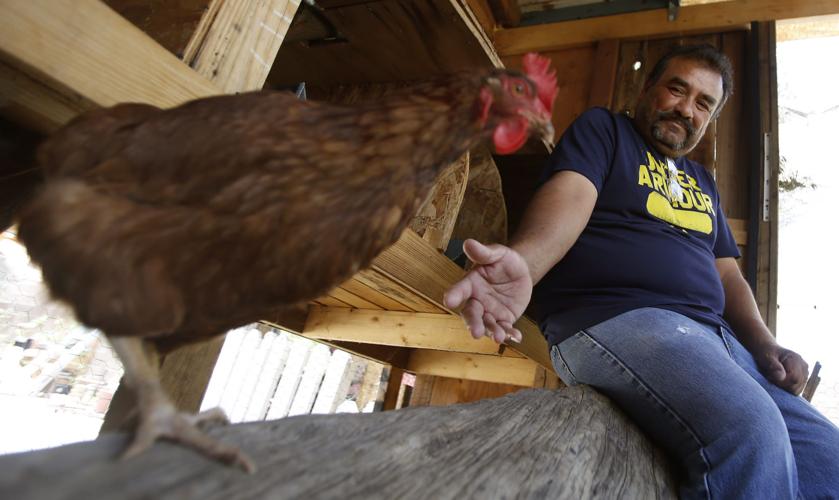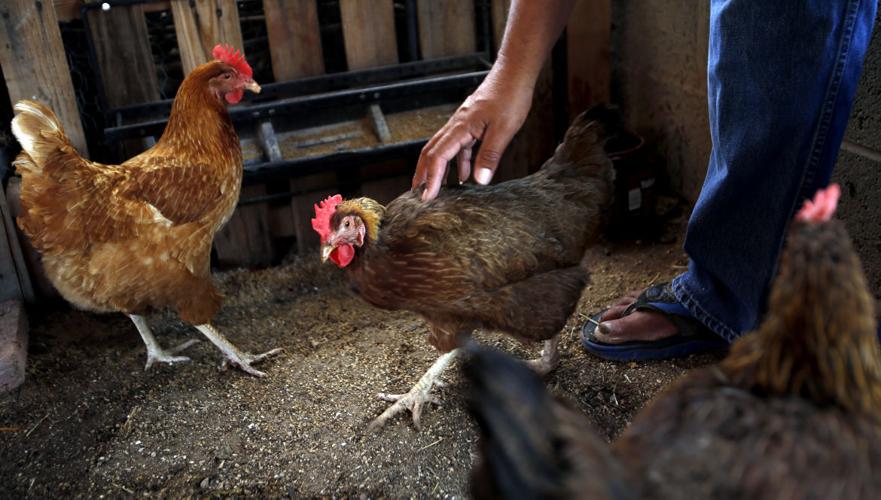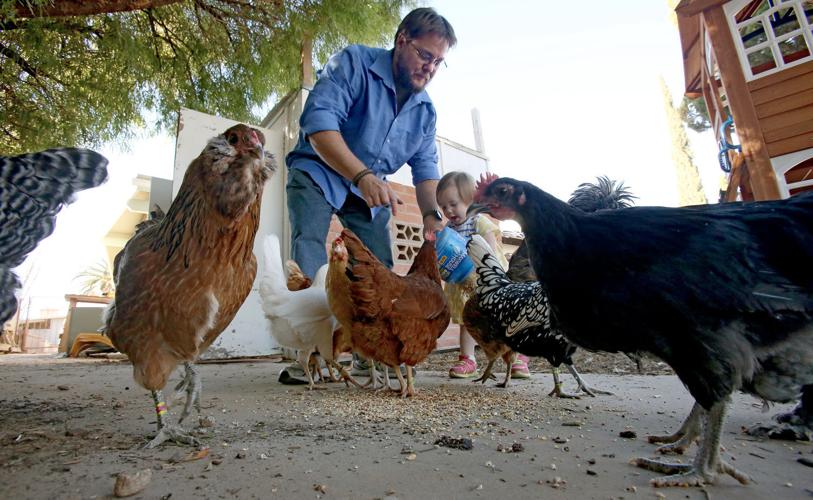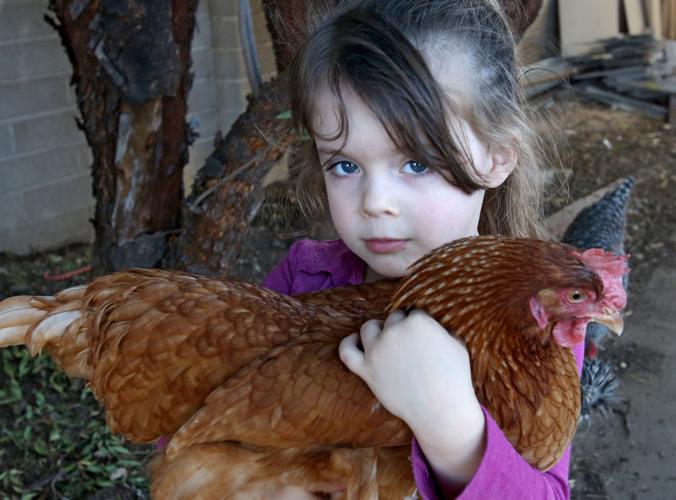Merrill Eisenberg has no chickens in the backyard of her midtown home. A dog, yes, but no feathered girls.
Yet many backyard chicken owners, and for that matter people who have backyard gardens, can thank Eisenberg — and a host of other individuals and community groups — for last week’s City Council adoption of the new urban agricultural zoning regulations. The rules, which take effect next month, will allow more leeway for residents to raise chickens and other small fowl, and to grow and sell backyard produce.
But it was Eisenberg’s persistent focus, organization and drive, over a six-year period, that produced the urban agriculture text amendment to the city’s development code that potentially will enhance Tucson’s urban quality of life, food security and sustainability.
But what the ordinance really does is legalize what more and more Tucsonans are doing: raising hens and other small birds, and growing veggies to consume and to sell.
Under the current, convoluted rules, Eisenberg said, “You can sell a junk car in your front yard but not a tomato.”
Eisenberg, however, doesn’t plan to raise hens now or in the future.
“I know nothing about agriculture,” she said last week while we sat in her living room, two days after the council voted 7-0 for the new changes. What the retired anthropologist did know was how to organize.
The genesis of the urban ag regulations grew out of a $15.7 million grant the county received in 2010 to promote healthy living and fight obesity. Eisenberg, who had taught at the University of Arizona’s College of Public Health before retiring in 2012, was the principal writer of the grant, a process that began in 2009.
As the county and other groups began to unfold the healthy living efforts, it became clear that urban agriculture was a critical part. What wasn’t clear was the city’s web of zoning rules. The paradox was how to promote healthier eating through backyard gardens and chickens if city zoning was unnavigable.
Eisenberg, who knew nothing about zoning, dived into the morass of city do’s and don’ts.
What followed was an exhaustive review of existing laws related to urban agriculture in Tucson and in other cities.
Community meetings were held and many discussions ensued.
Evident was the overwhelmingly enthusiastic support for a new and reasonable approach to urban gardening. Eisenberg gave props to the city’s Planning and Development Services Department and its interim director, Jim Mazzocco, for their open involvement.
“This was no backroom political deal,” Eisenberg said during Tuesday’s City Council meeting before the council vote.
The chamber was nearly full during the discussion,mostly with supporters of the ordinance. Many of them are from a group called Tucson CLUCKS, a Facebook community that grew directly from the move to adopt the new regulations. A few opponents also spoke.
Michael McDonald, CEO of the Community Food Bank of Southern Arizona, told the council that the new rules provide clarity to urban agriculture, which is good governance.
Other speakers said the zoning changes will help residents provide food for themselves, ensure food availability and promote more responsible stewardship. It will also spur more urban gardening and sustainable food programs, including community gardens.
Dennis Mizer said the new document will simplify the “hodge-podge, bits and pieces” of rules and make it easier for residents to understand. Mizer, who has chickens at his east-side home, said the birds are an integral part of the life of his children.
But really, said Josefina Cardenas, the new regulations are a recognition of what many Tucson families in the barrios and along the Santa Cruz River have done for generations. Urban agriculture was a prominent feature of older families, a way of life, she said.
“That’s who we are,” said Cardenas, a longtime resident of Barrio Kroger Lane at the foot of Sentinel Peak. “History and culture have reclaimed themselves.”
Exactly, said Eisenberg, who called the new urban agricultural rules a move “forward to the past,” which she wrote about in the lastest issue of Edible Baja Arizona magazine.
“Here in the Old Pueblo, the old is new again, as community gardens and household food production have become widespread — which is good news for chickens,” wrote Eisenberg.








